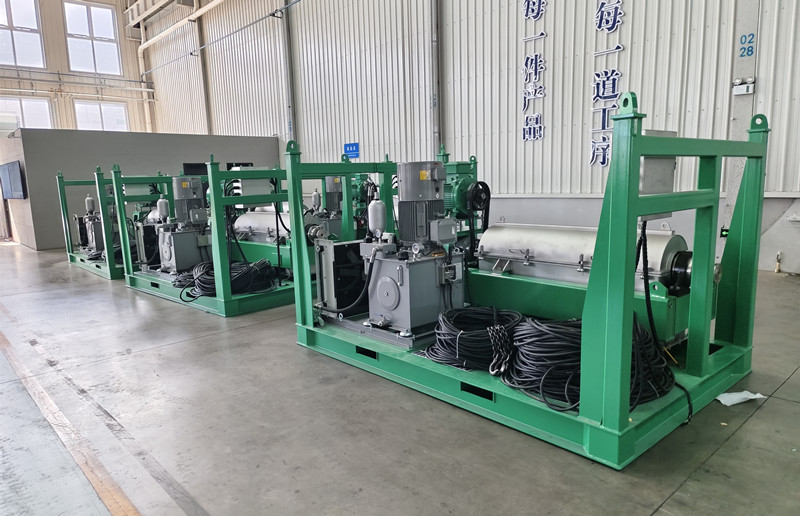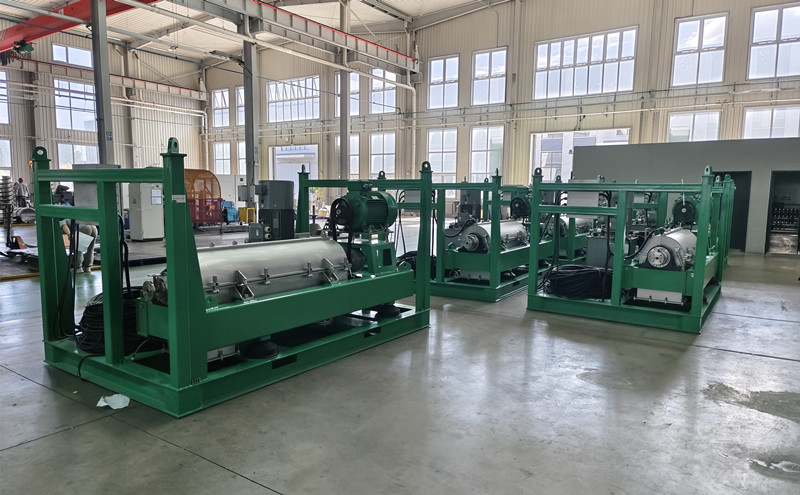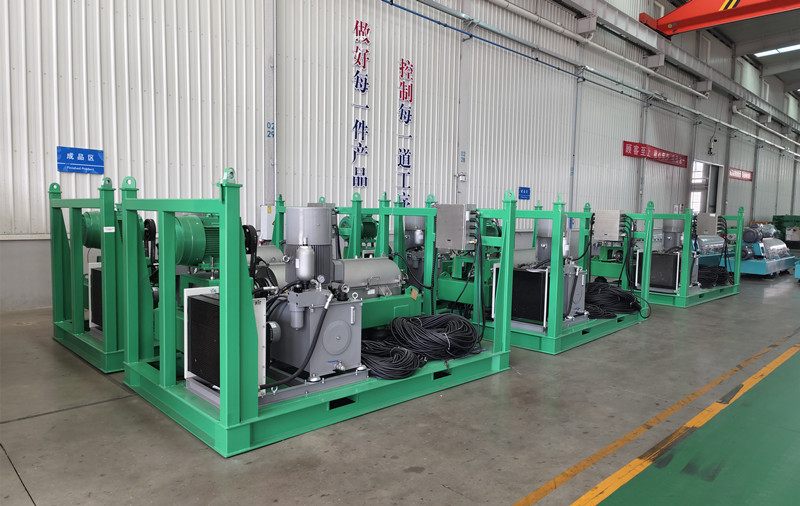5 Units GNLW364-FHD Decanter Centrifuge for Overseas Starch Processing Plant
GN Separation has recently finished a batch of hydraulic-driven decanter centrifuge; model GNLW364-FHD, to an overseas starch processing facility. This system, powered by Viscotherm’s globally recognized hydraulic technology, showcases an efficient and sustainable solid-liquid separation, particularly in high-viscosity applications.

Understanding the Functionality of a Hydraulic Decanter Centrifuge
Hydraulic decanter centrifuge is a cornerstone in industries that require continuous solid-liquid separation. It operates by leveraging centrifugal force to separate suspended solids from liquids based on their density differences. Here's how it works:
1. Feed Introduction: The process begins with the slurry, such as starch slurry, being pumped into the rotating bowl through a stationary feed tube.
2. Centrifugal Sedimentation: As the bowl spins at high speeds (typically 2,000–4,000 RPM), centrifugal forces up to 3,000×G drive denser solids towards the bowl's wall, while the lighter liquid forms an inner layer.
3. Conveyor Mechanism: A screw propeller, rotating slightly faster or slower than the bowl, transports the settled solids towards the conical end for discharge.
4. Phase Separation: Clarified liquid exits through adjustable weirs at the cylindrical end, allowing precise control over separation efficiency.
In hydraulic drive systems, the bowl and screw's rotational motion is primarily or partially powered by hydraulic motors. Unlike traditional mechanical gearboxes, hydraulic systems offer variable speed control and dynamic torque adjustment, optimizing performance under fluctuating feed conditions.

Key Advantages of Hydraulic Drive Systems
The GN centrifuge utilizes Viscotherm’s hydraulic drive system, a hybrid design that combines hydraulic and mechanical elements. This configuration provides several benefits, especially for high-viscosity and high-concentration materials:
1. Stable Torque Output: The hydraulic drive ensures smooth and efficient operation, reducing vibration and noise while enhancing separation efficiency and stability.
2. Accurate Differential Control: The hydraulic differential allows for precise control, even at extremely low differential speeds, making it ideal for applications requiring high separation accuracy.
3. Adaptability to Harsh Conditions: With robust heat dissipation and sealing, the hydraulic system operates reliably in high-temperature and high-humidity environments.
4. Stable Sealing Performance: The system’s sealing design effectively isolates contaminants, protecting oil purity and minimizing downtime due to malfunctions.
5. Compact and Lightweight Design: The hydraulic differential is smaller and lighter than mechanical alternatives, reducing pressure on main bearings and contributing to overall equipment longevity.

Applications of Hydraulic Decanter Centrifuges
Hydraulic decanter centrifuges are versatile and find applications in various industries, including:
1. Starch Production: Efficient separation of solids from liquids in starch processing.
2. Wastewater Treatment: Removing solids from wastewater to meet environmental standards.
3. Chemical & Pharmaceutical: Ensuring purity in chemical and pharmaceutical manufacturing processes.
4. Mining & Minerals: Separating valuable minerals from ore slurries.
GN Separation’s hydraulic decanter centrifuge combined with precise control and robust performance makes it an ideal choice for a wide range of high-viscosity applications. For more information on GN’s decanter centrifuges or to discuss your specific needs, please contact us.
